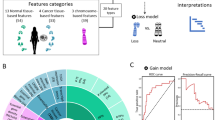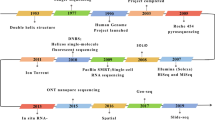Abstract
The risk of cigarette smoking plays a pivotal role in increasing the incidence rates of lung cancer. This paper sheds new light on modeling the impact of cigarette smoking on lung cancer evolution, especially genetic instability and the number of gene mutations in the genome of stem cells. To handle this issue, we have set up stochastic multi-stage models to fit the data set of the probabilities of current and former smokers from the Nurses’ Health Study cohort of females (NHS) and the Health Professionals Follow up Study cohort of men (HPFS). Throughout this paper, we consider both mutation rates and clonal expansion rates as parameters in each compartment. For current and former smokers, three-driver mutations are most likely to take place in the progression of lung cancer under smoking risk. For current smokers, our findings reveal that two to sixteen gene mutations are required to obtain a cancerous cell among men and women in US. Moreover, two to six (eleven) cancer-mutations are available in the pathway to lung cancer among former smokers who have quit smoking for more (less) than ten years for both male and female patients. This highlights that cigarette smoking stimulates the number of driver mutations during lung tumorigenesis in both sexes. It is very crucial to examine the role of cigarette smoking in determining whether genomic instability is an early stage or late stage in the process of lung carcinogenesis.

Similar content being viewed by others
References
Armitage P, Doll R (1954) The age distribution of cancer and a multi-stage theory of carcinogenesis. Br J Cancer 8:1–12
Asatryan AD, Komarova NL (2016) Evolution of genetic instability in heterogeneous tumors. J Theor Biol 396:1–12
Bain C, Feskanich D, Speizer FE, Thun M, Hertzmark E, Rosner BA, Colditz GA (2004) Lung cancer rates in men and women with comparable histories of smoking. J Natl Cancer Inst 96:826–834
Bielas JH, Loeb LA (2005) Mutator phenotype in cancer: timing and perspectives. Environ Mol Mutagen 45:206–213
Brody JP (2011) Age-specific incidence data indicate four mutations are required for human testicular cancers. PloS ONE 6:e25978
Brown CC, Chu KC (1983) Implications of the multistage theory of carcinogenesis applied to occupational arsenic exposure. J Natl Cancer Instit 70:455–463
Cassidy A, Field JK (2007) Environmental and genetic risk factors of lung cancer, outcome prediction in cancer. Elsevier, New York, pp 67–100
Chen LS, Kaphingst KA, Tseng TS, Zhao S (2016) How are lung cancer risk perceptions and cigarette smoking related?-testing an accuracy hypothesis. Translational cancer research 5:S964–S971
Cruz CSD, Tanoue LT, Matthay RA (2011) Lung cancer: epidemiology, etiology, and prevention. Clin Chest Med 32:605–644
Day NE, Brown CC (1980) Multistage models and primary prevention of cancer. J Natl Cancer Instit 64:977–989
Gaffney M, Altshuler B (1988) Examination of the role of cigarette smoke in lung carcinogenesis using multistage models1. J Natl Cancer Instit 80:925–931
Hahn WC, Weinberg RA (2002) Modelling the molecular circuitry of cancer. Nat Rev Cancer 2:331–341
Hanahan D, Weinberg RA (2000) The hallmarks of cancer. Cell 100:57–70
Harris TE (2002) The theory of branching processes. Applied mathematics series. Prentice-Hall, Englewood CLiffs
Heidenreich WF, Luebeck EG, Moolgavkar SH (1997) Some properties of the hazard function of the two-mutation clonal expansion model. Risk Anal 17:391–399
Henschke CI, Miettinen OS (2004) Women’s susceptibility to tobacco carcinogens. Lung Cancer 43:1–5
Jain M, Burch JD, Howe GR, Risch HA, Miller AB (1990) Dietary factors and risk of lung cancer: results from a case–control study, Toronto, 1981–1985. Int J Cancer 45:287–293
Jemal A, Siegel R, Ward E, Hao Y, Xu J, Murray T, Thun MJ (2008) Cancer statistics. CA Cancer J Clin 58:71–96
Khuder SA (2001) Effect of cigarette smoking on major histological types of lung cancer: a meta-analysis. Lung Cancer 31:139–148
Kvåle G, Bjelke E, Gart JJ (1983) Dietary habits and lung cancer risk. Int J Cancer 31:397–405
Leffondre K, Abrahamowicz M, Siemiatycki J, Rachet B (2002) Modeling smoking history: a comparison of different approaches. American journal of epidemiology 156:813–823
Lengauer C, Kinzler KW, Vogelstein B (1998) Genetic instabilities in human cancers. Nature 396:643–649
Li L, Tian T, Zhang X (2017) The impact of radiation on the development of lung cancer. J Theor Biol 428:147–152
Li L, Tian T, Zhang X (2018) Mutation mechanisms of human breast cancer. J Comput Biol 25:396–404
Li L, Tian T, Zhang X (2019) Stochastic modelling of multistage carcinogenesis and progression of human lung cancer. J Theor Biol 479:81–89
Loeb LA (1991) Mutator phenotype may be required for multistage carcinogenesis. Cancer Res 51:3075–3079
Loeb LA, Loeb KR, Anderson JP (2003) Multiple mutations and cancer. Proc Natl Acad Sci 100:776–781
Malvezzi M, Carioli G, Bertuccio P et al (2016) European cancer mortality predictions for the year 2016 with focus on leukaemias. Ann Oncol 27:725–731
Marx J (2002) Debate surges over the origins of genomic defects in cancer. Science 297:544–546
Meza R, Jeon J, Moolgavkar SH, Luebeck EG (2008) Age-specific incidence of cancer: Phases, transitions, and biological implications. Proc Natl Acad Sci 105:16284–16289
Meza R, Hazelton WD, Colditz GA, Moolgavkar SH (2008) Analysis of lung cancer incidence in the nurses’ health and the health professionals’ follow-up studies using a multistage carcinogenesis model. Cancer Causes Control 19:317–328
Moolgavkar SH, Luebeck G (1990) Two-event model for carcinogenesis: biological, mathematical, and statistical considerations. Risk Anal 10:323–341
Moolgavkar SH, Day NE, Stevens RG (1980) Two-stage model for carcinogenesis: epidemiology of breast cancer in females. J Natl Cancer Instit 65:559–569
Moolgavkar SH, Holford TR, Levy DT et al (2012) Impact of reduced tobacco smoking on lung cancer mortality in the United States during 1975–2000. J Natl Cancer Instit 104:541–548
Nagah A, Amer A, Zhang X (2019) The effect of cigarette smoking on lung cancer evolution. Math Biosci Eng 16:7771–7788
Nordling CO (1953) A new theory on the cancer-inducing mechanism. Br J Cancer 7:68–72
Parkin DM, Bray F, Ferlay J, Pisani P (2005) Global cancer statistics, 2002. CA Cancer J Clin 55:74–108
Ray G, Henson DE, Schwartz AM (2010) Cigarette smoking as a cause of cancers other than lung cancer: an exploratory study using the Surveillance. Epidemiol End Results Program Chest 138:491–499
Schöllnberger H, Beerenwinkel N, Hoogenveen R, Vineis P (2010) Cell selection as driving force in lung and colon carcinogenesis. Cancer Res 70:6797–6803
Shih IM, Zhou W, Goodman SN, Lengauer C, Kinzler KW, Vogelstein B (2001) Evidence that genetic instability occurs at an early stage of colorectal tumorigenesis. Cancer Res 61:818–822
Siegel RL, Miller KD, Jemal A (2015) Cancer statistics. CA Cancer J Clin 65:5–29
Siegel RL, Miller KD, Jemal A (2018) Cancer statistics. CA Cancer J Clin 68:7–30
Stratton MR, Campbell PJ, Futreal PA (2009) The cancer genome. Nature 458:719–724
Thun MJ, Henley SJ, Burns D, Jemal A, Shanks TG, Calle EE (2006) Lung cancer death rates in lifelong nonsmokers. J Natl Cancer Instit 98:691–699
Tomasetti C, Marchionni L, Nowak MA, Parmigiani G, Vogelstein B (2015) Only three driver gene mutations are required for the development of lung and colorectal cancers. Proc Natl Acad Sci 112:118–123
Vogelstein B, Kinzler KW (1993) The multistep nature of cancer. Trends Genetics 9:138–141
Vogelstein B, Kinzler KW (2004) Cancer genes and the pathways they control. Nat Med 10:789–799
Wynder EL, Hoffmann D (1994) Smoking and lung cancer: scientific challenges and opportunities. Cancer Res 54:5284–5294
Yang P, Cerhan JR, Vierkant RA et al (2002) Adenocarcinoma of the lung is strongly associated with cigarette smoking: further evidence from a prospective study of women. Am J Epidemiol 156:1114–1122
Zang EA, Wynder EL (1996) Differences in lung cancer risk between men and women: examination of the evidence. J Natl Cancer Instit 88:183–192
Zhang X, Simon R (2005) Estimating the number of rate limiting genomic changes for human breast cancer. Breast Cancer Res Treat 91:121–124
Zhang X, Fang Y, Zhao Y, Zheng W (2014) Mathematical modeling the pathway of human breast cancer. Math Biosci 253:25–29
Author information
Authors and Affiliations
Corresponding author
Ethics declarations
Conflict of interest
The authors declare that they have no conflict of interest.
Additional information
Publisher's Note
Springer Nature remains neutral with regard to jurisdictional claims in published maps and institutional affiliations.
Electronic supplementary material
Below is the link to the electronic supplementary material.
Rights and permissions
About this article
Cite this article
Nagah, A., Amer, A. Different Mechanisms of Cigarette Smoking-Induced Lung Cancer. Acta Biotheor 69, 37–52 (2021). https://doi.org/10.1007/s10441-020-09394-9
Received:
Accepted:
Published:
Issue Date:
DOI: https://doi.org/10.1007/s10441-020-09394-9




